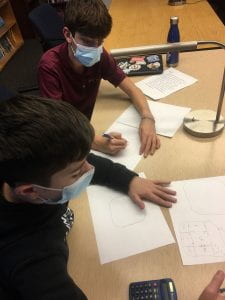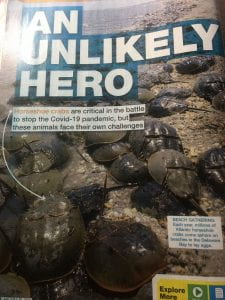





Dear Parents,
We have just about completed Truman Capote’s In Cold Blood. While it was a difficult read, we have learned a great deal. In addition to gaining an understanding of how Perry Smith and Dick Hickock murdered the Clutter family on the evening of November 14, 1959, we also learned that:
- Truman Capote and Harper Lee, the author of To Kill a Mockingbird, were childhood friends
- The character of Dill in To Kill a Mockingbird is based on Truman Capote
- In Cold Blood was the last novel by Truman Capote, though he was only 40 years old at the time of its publication in 1965
- Perry Smith experienced a horrific upbringing which may have contributed to his anti-social behavior
- Dick Hickock was badly injured in a 1950 car crash in which he suffered a brain injury that may have contributed to his taking a destructive path in life
- It is extremely unlikely that either Perry Smith or Dick Hickock would have committed the Clutter murders on their own. However, together they were toxic.
- Kansas is the sunflower state
- Dick Hickock and Perry Smith were executed for the Clutter family murders on Good Friday April 14, 1965
- Truman Capote attended the executions of Dick Hickock and Perry Smith
- Abraham Lincoln was assassinated on Good Friday April 14, 1865, 100 years to the date of Dick Hickock and Perry Smith’s execution
- 28 states currently have the death penalty for capital offenses
- In most criminal cases a jury of 12 men and women, plus two alternates are selected
- All 12 jurors must agree before a defendant can be found guilty
We will play a game of In Cold Blood Jeopardy early next week since it was requested by students. Also, students have been bemoaning how overly descriptive Capote’s writing can be at times. They’re not wrong. In response, we will each be taking a paragraph from the novel and rewriting it simply, in an attempt to boil down its essence. When I was working on my PhD, at the University of Illinois my Chair Mark Smylie would instruct us to get to the central idea of any book or journal article we read in no more than four sentences. Most of us found it to be a yeoman task at first, but we improved with practice. It is a formidable skill to possess, I think as the more economical one’s writing is, the more powerful it becomes. As an example, Abraham Lincoln’s Gettysburg Address consisted of a mere 272 words and is perhaps the most revered speech in American history.
Four score and seven years ago our fathers brought forth on this continent, a new nation, conceived in Liberty, and dedicated to the proposition that all men are created equal. Now we are engaged in a great civil war, testing whether that nation, or any nation so conceived and so dedicated, can long endure. We are met on a great battlefield of that war. We have come to dedicate a portion of that field, as a final resting place for those who here gave their lives that that nation might live. It is altogether fitting and proper that we should do this. But, in a larger sense, we cannot dedicate — we cannot consecrate — we cannot hallow — this ground. The brave men, living and dead, who struggled here, have consecrated it, far above our poor power to add or detract. The world will little note, nor long remember what we say here, but it can never forget what they did here. It is for us the living, rather, to be dedicated here to the unfinished work which they who fought here have thus far so nobly advanced. It is rather for us to be here dedicated to the great task remaining before us — that from these honored dead we take increased devotion to that cause for which they gave the last full measure of devotion — that we here highly resolve that these dead shall not have died in vain — that this nation, under God, shall have a new birth of freedom — and that government of the people, by the people, for the people, shall not perish from the earth.
Abraham Lincoln
November 19, 1863
We will be moving on to Lorraine Hansberry’s seminal play, A Raisin in the Sun next week for African American History Month. After dealing with murder and mayhem it will be a welcome respite to read a piece that is ultimately quite positive. We’ll also be covering the Langston Hughes poem, “A Dream Deferred” by Langston Hughes from which the titled was taken.
A Dream Deferred
What happens to a dream deferred?
Does it dry up
Like a raisin in the sun?
Or fester like a sore–
And then run?
Does it stink like rotten meat?
Or crust and sugar over–
like a syrupy sweet?
Maybe it just sags
like a heavy load.
Or does it explode?
In Math, in order to better understand surface area, we drew up plans for a house that contains 2,400 square feet on a lot that is 3,600 feet. We already know that length times width will provide us with square footage, but I am hoping that students will better understand the concept when they actually design a structure. Additionally, we will locate our houses in the city or suburb of our choice and subsequently conduct some research on the Zillow website to determine what our house may be worth and what the expected property taxes might be. When we have completed the project, I will post pictures. I’m providing a few pictures of our works in progress. In this way, we will not only learn a mathematical concept, but will also be able to apply it, thus promoting a life skill that everyone will need at some point.
In Social Studies we looked into the liberation of the Auschwitz concentration camp on January 27, 1945. We learned that Auschwitz was opened in the spring of 1940’s outside of Krakow, Poland and that more than 1,000,000 people including Jews, gypsies, artists, homosexuals and the mentally and physically disabled were murdered there. We watched the following video:
https://www.youtube.com/watch?v=cc7j8jrYItY
In Science, we looked back on the space shuttle Challenger disaster which occurred January 28, 1986, two days after the Chicago Bears won the Super Bowl for the first and only time. For those of you old enough to remember, Challenger, in addition to transporting six trained astronauts was also carrying a schoolteacher named Christa McAuliffe, a schoolteacher from New Hampshire. The idea was for McAuliffe to teach lessons from outer space to her students. Sadly, the flight ended 73 seconds after liftoff, when the craft exploded, the result of a defective O ring.
https://www.youtube.com/watch?v=AfnvFnzs91s
For those who may be interested, there is a docuseries on Netflix entitled Challenger: The Final Flight. Below are some details:
https://www.space.com/challenger-final-flight-netflix-docuseries.html
We also learned how the horseshoe crab has been instrumental in helping scientists make sure that batches of the Covid-19 vaccine have not been contaminated and are safe to distribute to patients.
https://www.nationalgeographic.com/animals/2020/07/covid-vaccine-needs-horseshoe-crab-blood/
Additionally, we investigated the first full moon of the year, also known as the “wolf’s moon.” I saw it in the forest behind my home this morning as I was leaving to come to Plato, and it was quite beautiful. Explanations as to why the first full moon of the year is referred to the “wolf’s moon,” differ. In general, however it is thought that Native Americans created the moniker when they observed wolves howling at it with exceptional vigor and believed that it was predictive of things to come.
Finally, we looked at an example of good and bad behavior in the midst of a global pandemic.
The bad behavior occurred in Canada where a millionaire couple used their money and influence to jump the line and receive Covid-19 vaccines ahead of those more at risk by travelling to a remote area of the country and receiving vaccines meant for indigenous people and the elderly.
The good behavior occurred in Oregon where health care workers returning from a vaccination event became stranded in a snowstorm. Instead of thinking only of themselves, they used their remaining vaccines and went from car to car inoculating other stranded motorists.
Take care and stay warm. Please feel free to direct any questions or concerns to: michaelflynnphd@gmail.com
Dr. Michael






